PUBLISHED: July 2025 by Lauren Berman, Conservation Technician
Photo Credit: Lauren Berman
Native plants and native insects have worked together for millions of years to create functional and diverse habitats. Along our Bayou Greenways is a hidden world of unique insects that call native plants their home. The next time you’re out on the trails, slow down and take a moment to observe. You might spot any number of cool insects, including those below.
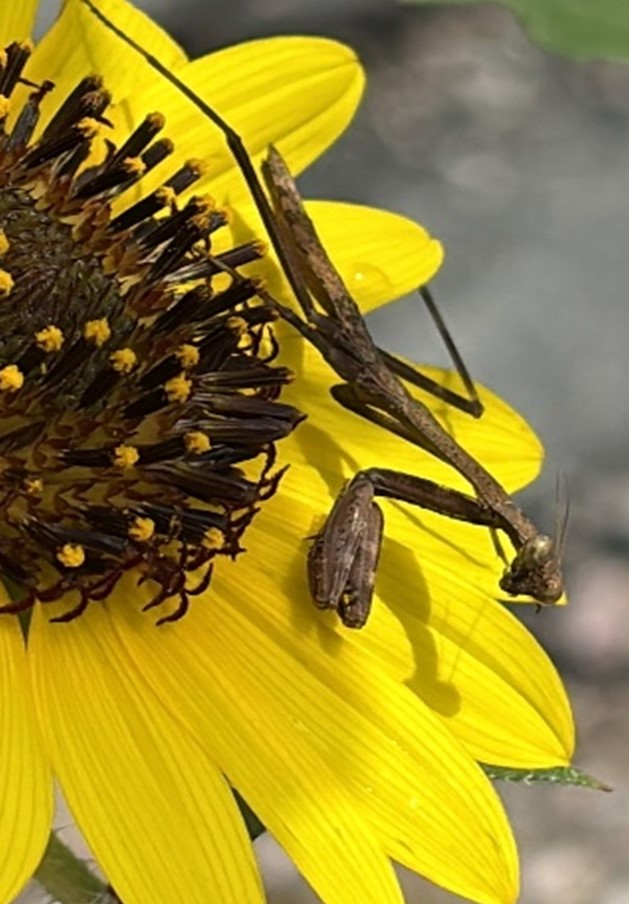
Here, a Carolina Praying Mantis (Stagmomantis carolina) rests on an Annual Sunflower (Helianthus annum) as it waits to catch its next meal on Greens Bayou Greenway. The brown coloration helps it blend in with nearby grasses and trees, and for this mantis, sometimes the center of sunflowers.
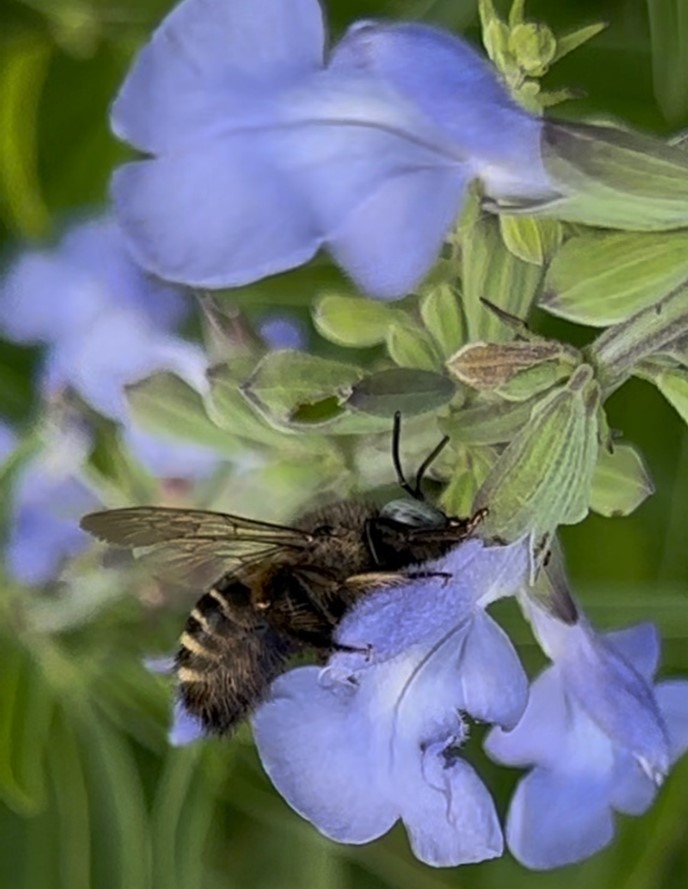
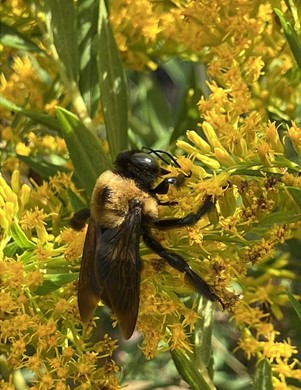
The long periods of warm weather in Houston means we get to see all kinds of flowers and native bees throughout the year. Horsefly Carpenter Bees (Xylocopa tabaniformis parkinsoniae) are especially prevalent in the spring, like this one found on Blue Sage (Salvia azurea) along Brays Bayou Greenway. When Tall Goldenrod (Solidago altissima) blooms in the fall, you might find an Eastern Carpenter Bee (Xylocopa virginica) hanging around — this particular one was spotted at HPB’s nursery. Similar to Bumblebees (Bombus spp.), Carpenter Bees help pollinate flowers via “buzz pollination” by vibrating their strong thorax to shake out pollen.
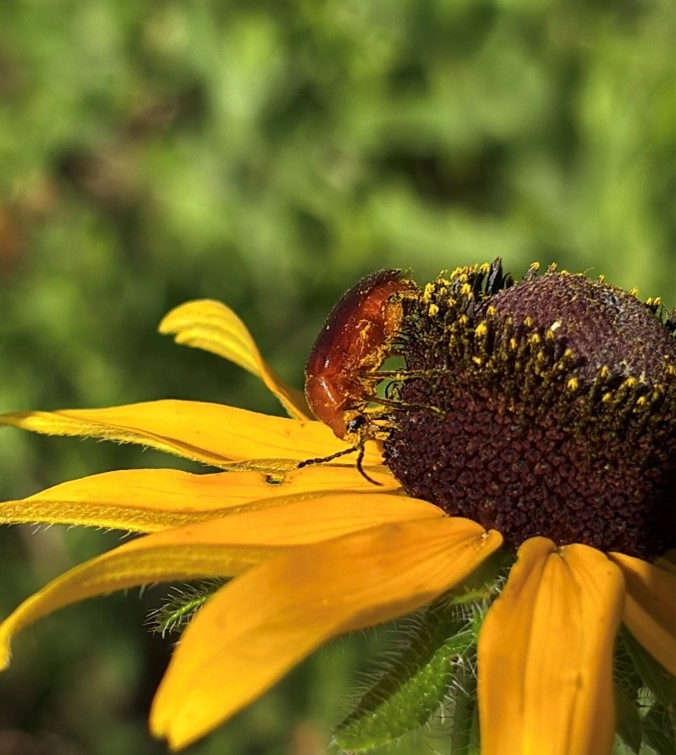
When we think of pollinators, beetles are often left out of the mental picture, but they were actually some of the first insects to pollinate flowers. Yellow pollen from a Black-eyed Susan (Rudbeckia hirta) covers this Brown Blister Beetle (Zonitis sp.) as it drinks nectar out on Greens Bayou Greenway.
There are a wide variety of dragonflies and damselflies to be found in Houston. They add a pop of color among our grasses and waterways as they hunt for other insects — including mosquitoes. Taking a break from flying around, this Halloween Pennant Dragonfly (Celithemis eponina) rests out in one of Thomas Bell Foster Park’s wetland areas.
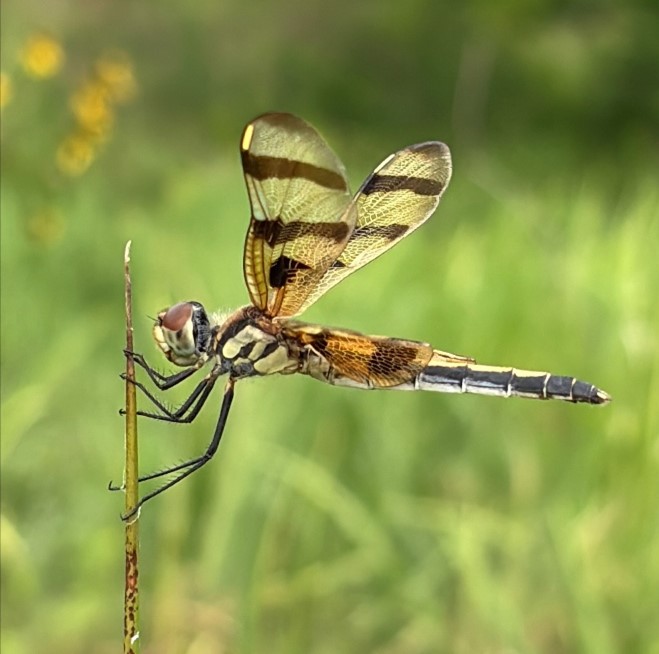
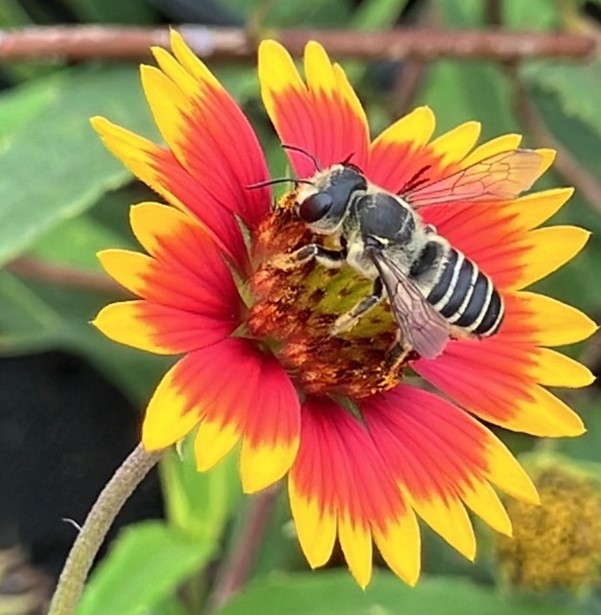
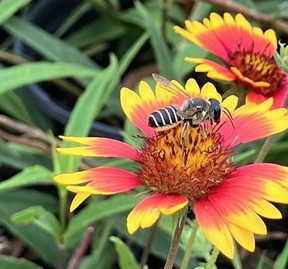
Leafcutter Bee (Megachile sp.) on Firewheel (Gaillardia pulchella)
Don’t be fooled — this black and yellow bee is not the non-native European Honeybee (Apis mellifera) but rather a Leafcutter Bee (Megachile sp.) seen on one of its favorite native flowers, Firewheel (Gaillardia pulchella). Bees in the family Megachilidae use scopa (dense pollen carrying hairs) on the bottom of their abdomen to gather pollen rather than collecting on the back legs. As one of Texas’ 800 native bee species, they rely on native plants to provide food and shelter.
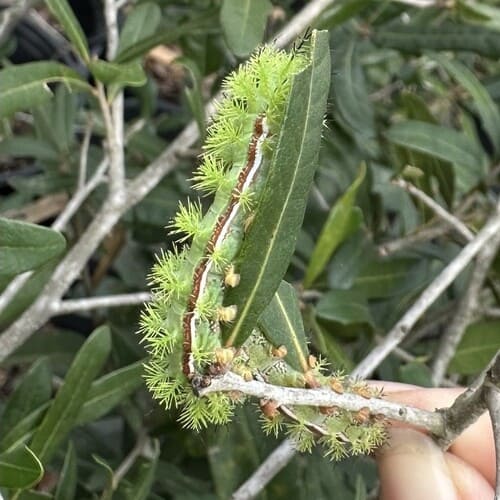
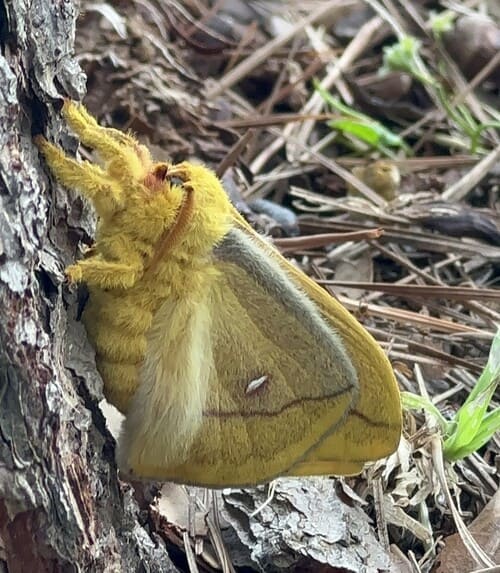
Oak trees (Quercus spp.) are essential native plants and the more than 50 species in Texas are widely utilized by a variety of wildlife. At HPB’s nursery, these colorful Io Moth (Automeris io) caterpillars snack on Live Oaks (Quercus virginiana) as their food source. Eventually, they turn into beautiful yellow male or amber female moths.
You never know what types of wildlife you’ll encounter along the Bayou Greenways. Share your photos with us on our social platforms by tagging @houstonparksboard on Instagram and Facebook or @houparksboard on X!
